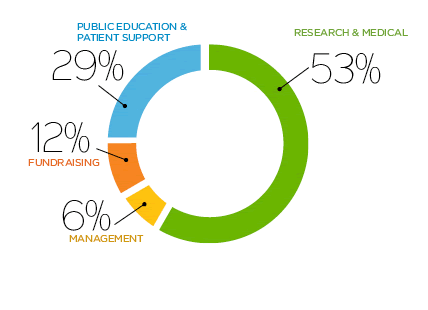
Our mission is simple. To END NF. At this point there is no cure for NF. We can do this through creating awareness of NF and raising funds for finding a cure. Put simply: Awareness = Money = Cure. We hope that Ryder's journey will help others understand NF and spur them to help through donations, volunteering, or simply spreading the word.

Our Mission
What is NF?
Neurofibromatosis encompasses a set of distinct genetic disorders that cause tumors to grow along various types of nerves and, in addition, can affect the development of non-nervous tissues such as bones and skin. Neurofibromatosis causes tumors to grow anywhere on or in the body.
Neurofibromatosis (NF) has been classified into three distinct types: NF1, NF2 and Schwannomatosis.
Neurofibromatosis 1 (NF1): also known as von Recklinghausen NF or Peripheral NF. Occurring in 1:3,000 births, it is characterized by multiple cafe-au-lait spots and neurofibromas on or under the skin. Enlargement and deformation of bones and curvature of the spine (scoliosis) may also occur. Occasionally, tumors may develop in the brain, on cranial nerves, or on the spinal cord. About 50% of people with NF1 also have learning disabilities.
Neurofibromatosis 2 (NF2): also known as Bilateral Acoustic NF (BAN), is much rarer and occurs in 1:25,000 births. NF2 is characterized by multiple tumors on the cranial and spinal nerves, and by other lesions of the brain and spinal cord. Tumors affecting both of the auditory nerves are the hallmark. Hearing loss beginning in the teens or early twenties is generally the first symptom.
Schwannomatosis: a rare form of NF that has only recently been recognized and appears to affect around 1:40,000 individuals. It is less well understood than NF1 and NF2, and its features may vary greatly between patients
Facts & Statistics about NF
-
The Neurofibromatoses are genetically-determined disorders which affect more than 2 million people worldwide; this makes NF more prevalent than cystic fibrosis, Duchenne muscular dystrophy, and Huntington's Disease combined.
-
All forms of NF are autosomal dominant genetic disorders which can be inherited from a parent who has NF or may be the result of a new or "spontaneous mutation" (change) in the sperm or egg cell.
-
Each child of an affected parent has a 50% chance of inheriting the gene and developing NF. The type of NF inherited by the child is always the same as that of the affected parent, although the severity of the manifestations may differ from person to person within a family.
-
NF is worldwide in distribution, affects both sexes equally and has no particular racial, geographic or ethnic distribution. Therefore, NF can appear in any family.
-
Although most cases of NF1 are mild to moderate, NF1 can lead to disfigurement; blindness; skeletal abnormalities; dermal, brain, and spinal tumors; loss of limbs; malignancies; and learning disabilities.
-
NF1 also has a connection to developmental problems, especially learning disabilities, which are five times more common in the NF1 population than in the general population.
-
The distinguishing feature of NF2 is tumors that grow on the eighth cranial nerve in both ears, commonly causing deafness and severe balance problems.
-
NF2 brings on increased risk of other types of nervous system tumors as well.
-
NF2 can also cause severe vision problems, including cataracts, retinal abnormalities and orbital tumors.
Children's Tumor Foundation
Founded in 1978, the Children's Tumor Foundation (CTF) is dedicated to improving the health and well-being of individuals and families affected by neurofibromatosis (NF), the term for three distinct disorders: NF1, NF2 and schwannomatosis. Today, CTF is a highly recognized national nonprofit foundation, the leading force in the fight to end NF, and a model for other innovative research endeavors.
Their mission is to advance peer-reviewed research to develop treatments and cures for NF; support persons with NF and their families by making thorough and accurate information readily available; assist in developing clinical centers and best practices to improve access to quality healthcare for those who live with NF; and expand public awareness of NF to improve diagnoses, increase understanding of the challenges that NF presents, and encourage support for NF research.

The Children's Tumor Foundation Is Revolutionizing the Field of NF Research
Traditionally, medical research has been based on a culture of competition between scientists, who were pitted against one another to discover cures and treatments. This model led to data stockpiling, a process that ultimately delayed the drug discovery process.
Frustrated by this traditional model of drug research and driven by our belief in a culture of collaboration, the Children's Tumor Foundation formulated a strategic plan to accelerate the cure for neurofibromatosis by actively engaging all stakeholders in NF research: patients, scientists, doctors, pharmaceutical companies and the biotechnology field.
In a few short years, we have grown from a foundation that funds promising science to one that catalyzes the drug discovery process through a series of innovative processes, key partnerships and strategic investments.
The Children’s Tumor Foundation is so much more than a funder of scientific research. We have revolutionized the field of NF research, forging new pathways for one reason and one reason only: to benefit the millions of people living with NF.



